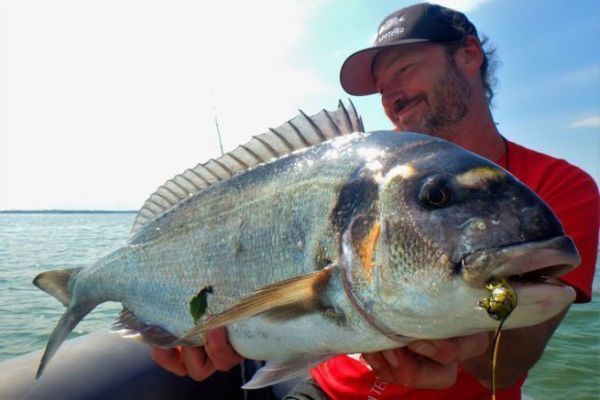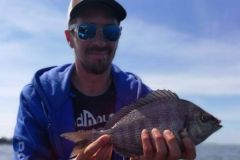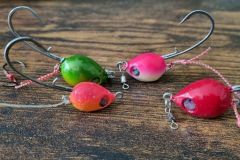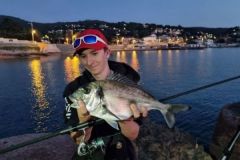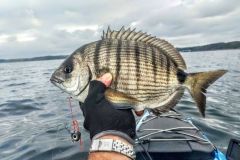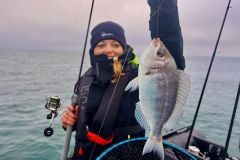There are so many models of tenyas on the market today. Although they differ in color and sometimes in material, it is above all the shape which is important and which should condition your choice, as it determines the behaviour of your bait under water. I'm only going to present the ones I use, distributed by Flashmer under the Explorer brand, but the mechanical principles behind their design can be transposed to other models and brands on the market.
Spara, the original conical shape
The first tenyas all had the same distinctive conical shape, and it was only when their use became more widespread that new models appeared.
So the Spara, like most "first-generation" tenyas, has a conical shape with a flat base. The advantages of this profile are twofold:
- The low center of gravity ensures great stability. As a result, when lowered and presented on the bottom, your gambas will always be presented head-up and your bait will not lie on its side. This of course limits snagging, but above all ensures optimum presentation of your bait.
- Apart from the fact that your tenya will be stable once on the bottom, the flat base increases the water's lift, thus slowing its descent and giving your tenya a rolling effect, i.e. making it wobble around its longitudinal axis. As it sinks, your tenya will tilt slightly and successively from right to left, allowing the water to slide along this flat base. In this way, your gambas, showing its sides alternately, will give a greater impression of life and be all the more attractive for it.
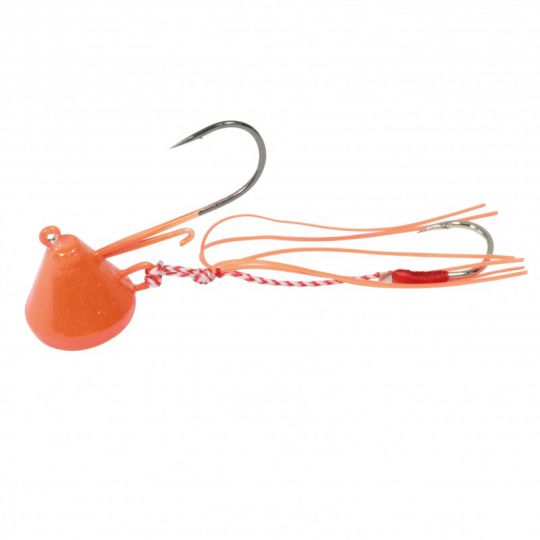
Explorer Deep, for deeper fishing and strong currents
The Deep model is particularly well suited to the Golfe du Morbihan and estuaries, where currents are often very strong (up to 8 knots...). Its round, much more hydrodynamic profile gives it a rapid descent and, for the same weight, enables it to stay closer to the bottom in strong currents. It is also equipped with a flat front, less pronounced, but giving your gambas a slight rolling action. Its center of gravity is off-centre towards the front, allowing you to present your bait head-up at a 45° angle and limit snagging.
I use it mainly in areas deeper than 10-12 m and with currents greater than 2 knots. In other conditions, I use the Shallow model.
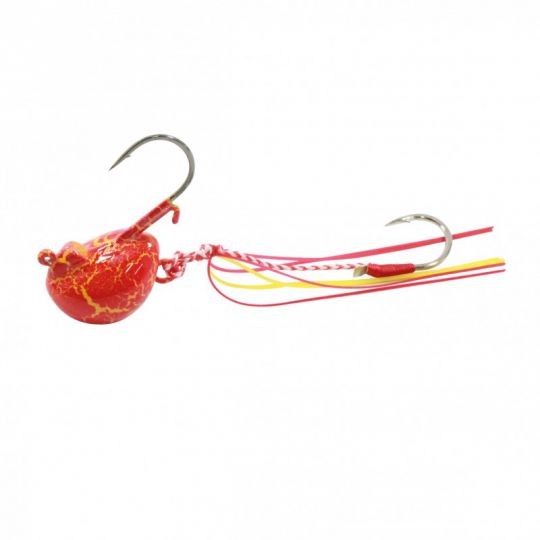
Explorer Shallow, for a gliding swim
Unlike its predecessor, the Explorer Shallow has been designed to fish shallower areas with weaker currents. These conditions allow a less hydrodynamic rig to be used comfortably and efficiently, thus enhancing its presentation.
With its flatter, wider profile, the Shallow model allows a slow descent of your bait and its greater lift over the water gives it a gliding, "lighter" presentation above the bottom. Its flattened front ensures a 45° presentation like the previous model, but above all its wide edges increase the rolling action of your gambas.
I use it mainly in areas of less than 10 m (especially large gravel flats) and with a current of less than 2 knots.
Another application for the Shallow is in-between water fishing. When you detect fish suspended in the water column, the Shallow's buoyancy will enable you to swim more naturally and steadily at the desired depth.
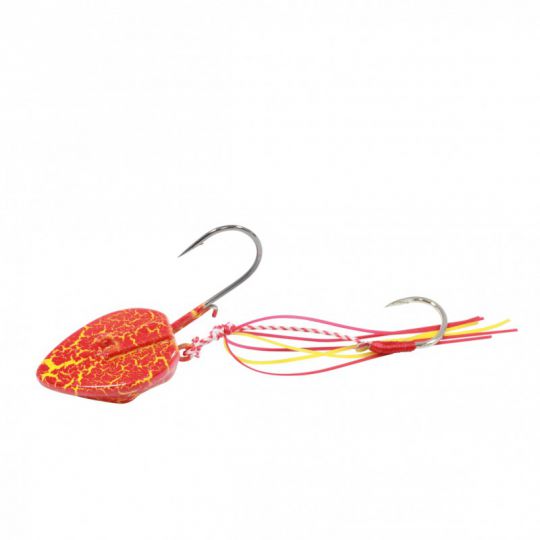
Colors and weights
Whatever model you use, the most important parameter in this type of fishing is the weight of your tenya. This must be adapted to the depth and current to keep you in the right layer of water. It's important to change regularly if you're convinced of the presence of fish, but you're not registering any hits.
As far as colors are concerned, if this parameter is to have an influence, I confess I have no particular preference.
